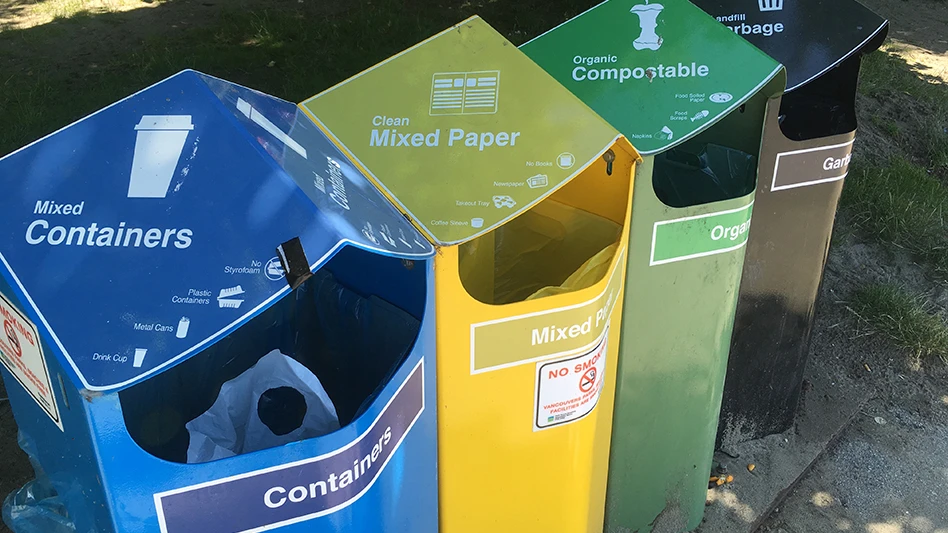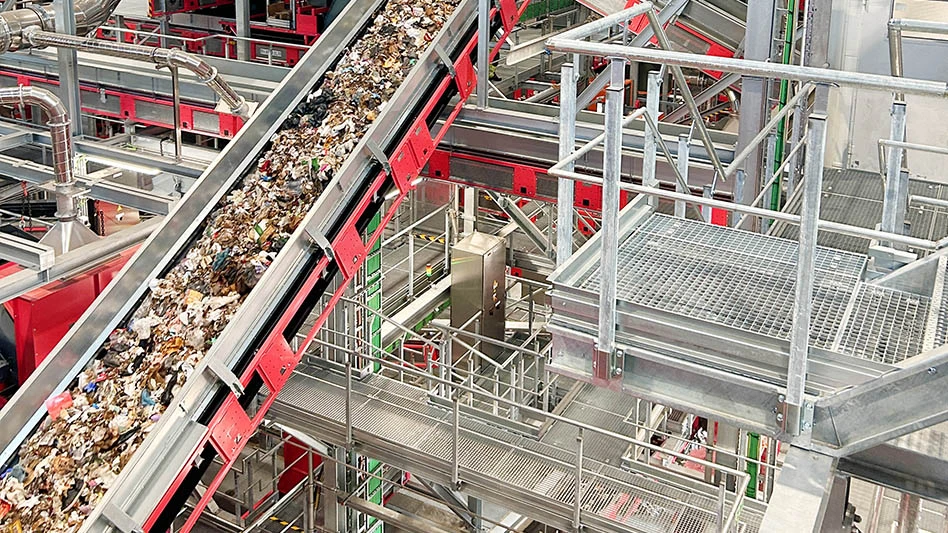
Recycling Today archives
The first release of recycling program acceptance data gathered from a joint initiative of The Recycling Partnership and GreenBlue has identified aluminum used beverage cans (UBCs), old corrugated containers (OCC) and old newspapers (ONP) as some the most commonly accepted items in municipal and curbside recycling programs.
The Recycling Partnership, Washington, and Charlottesville, Virginia-based Green Blue, which operates the How2Recycle label system, released the first iteration of its United States Community Recycling Program Acceptance Data this month, saying the data set provides the most up-to-date information on which materials are accepted in recycling programs across the U.S.
“Actionable, up-to-date data about what is and is not accepted in towns across America is critical if we are going to improve our recycling rates,” says Keefe Harrison, CEO of The Recycling Partnership. “As a result of this initiative, the public, companies and policymakers now have the timely information they need to make better recycling decisions.”
The result shows UBCs are accepted by 91 percent of programs, followed by OCC at 90 percent and three recyclables with an 89 percent acceptance rate: ONP, polyethylene terephthalate (PET) bottles and high-density polyethylene (HDPE) plastic jugs.
Other potential curbside and recycling drop-off location items scoring above 80 percent are steel cans and kraft paper bags at 88 percent; old magazines, office paper and junk mail at 87 percent; paperboard and boxboard at 84 percent; paperback books at 81 percent; and non-food molded pulp or fiber packaging items at 80 percent.
Struggling at the lower end of the acceptance rate are multimaterial pouches or bags and polyethylene (PE) monomaterial shopping bags at 3 percent; and expanded polystyrene (EPS) items and molded pulp food service items at 4 percent.
The Recycling Partnership and GreenBlue characterize the U.S. recycling system as a "complex" network of 9,000-plus separate local recycling programs that process billions of pounds of material each year.
The Recycling Partnership’s national database captures local recycling program data, representing 99 percent of the U.S. population and has been designed to track local changes on the acceptance of more than 50 different categories of recyclables.
"Until today, communicating the recyclability of packaging has been informed by a national-scale study conducted every five years," the organization says.
“There is a growing demand for up-to-date, industry-aligned data that affords a more in-depth understanding of what materials are accepted in local recycling programs across the country," GreenBlue Executive Director Paul Nowak adds. That is why, moving forward, GreenBlue will reference The Recycling Partnership’s National Database and Community Recycling Program Acceptance Data as the trusted source for packaging recyclability to inform How2Recycle’s recyclability assessments for on-pack labeling.”
The partnership’s acceptance data will be published and posted to its website twice annually and will be made available to brands, retailers, material producers, policymakers and the public as more frequently updated, localized and harmonized recycling program acceptance data.
Latest from Waste Today
- US Senate backs reduced cuts to EPA
- ELV Select Equipment, Reworld aid NYPD in secure firearm disposal
- Waste Connections announces Q2 results
- Returnity and Cosmoprof to address reusable bag waste
- SWANA releases report on aging WTE facilities
- New economic assessment reveals cost benefits of California’s SB 54
- Premier Truck Sales & Rental opens new facility
- TeknTrash Robotics, Sharp Group partner on humanoid robot pilot





